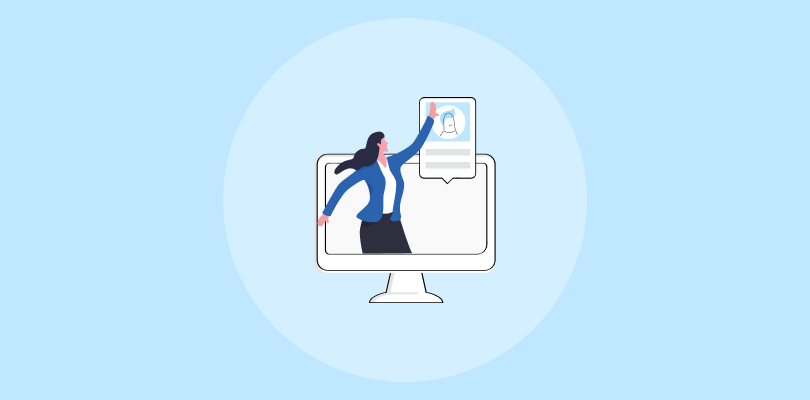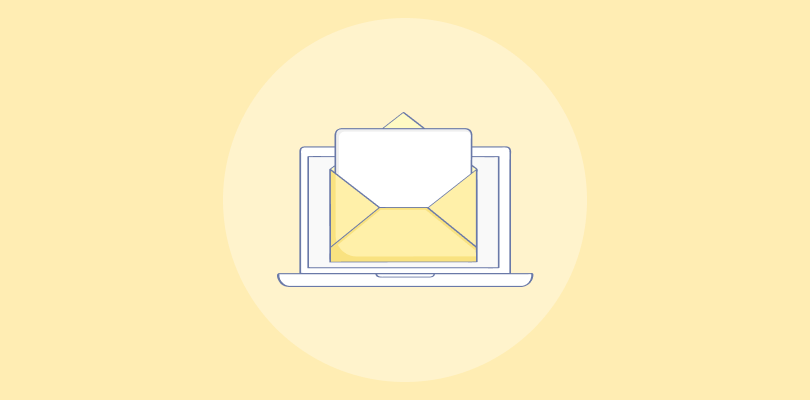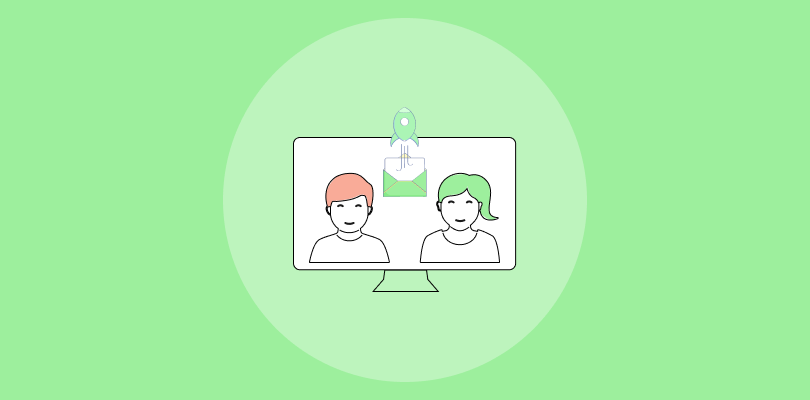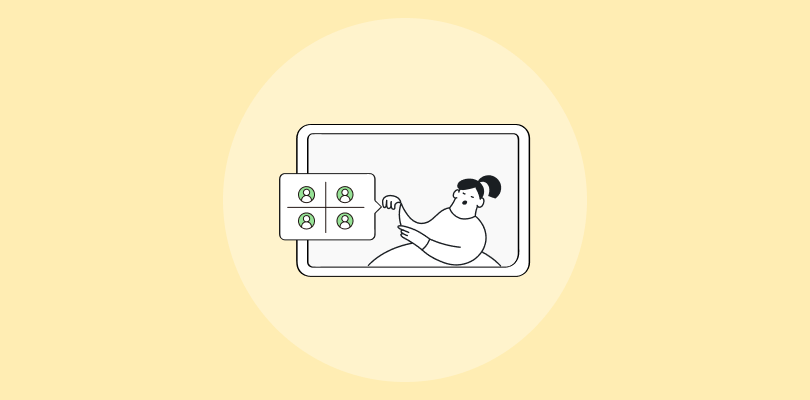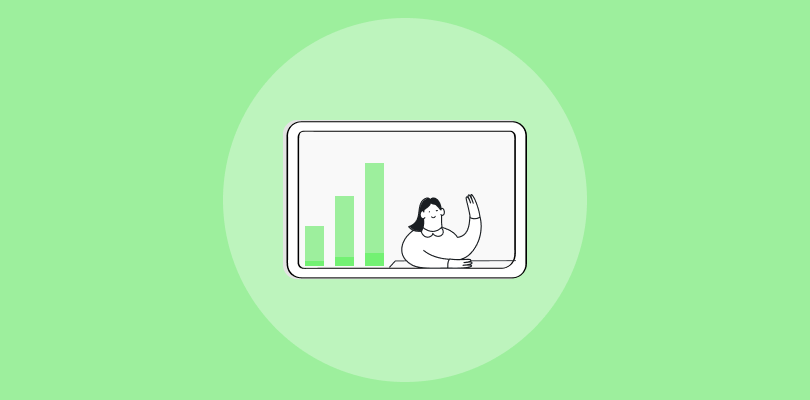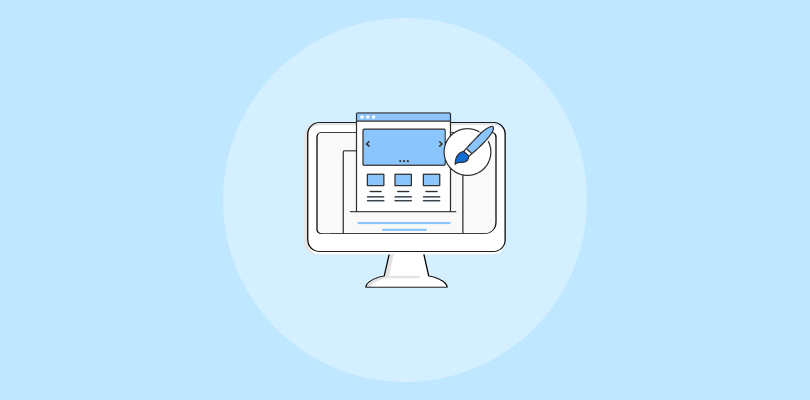“It all started on a Facebook group. Someone mentioned ‘webinar funnels,’ and I was like, ‘Wait, what?’
Turns out, I’d been missing a HUGE piece of the puzzle.
And trust me, once I figured it out, everything changed…”
Great story, right? This comes from one of my pals, Sarah, who has been creating webinars for quite some time.
Having been in the webinar industry for years, I’m surprised many creators lack funnels or awareness of them.
Wish to get a better idea of the perfect webinar funnels and how to create them?
Here’s a detailed guide for you.
What is a Webinar Funnel?
A webinar funnel is a marketing process that guides potential customers from discovering a webinar to signing up and eventually purchasing. It typically includes steps like promoting the webinar, collecting registrations, and following up with attendees afterward.
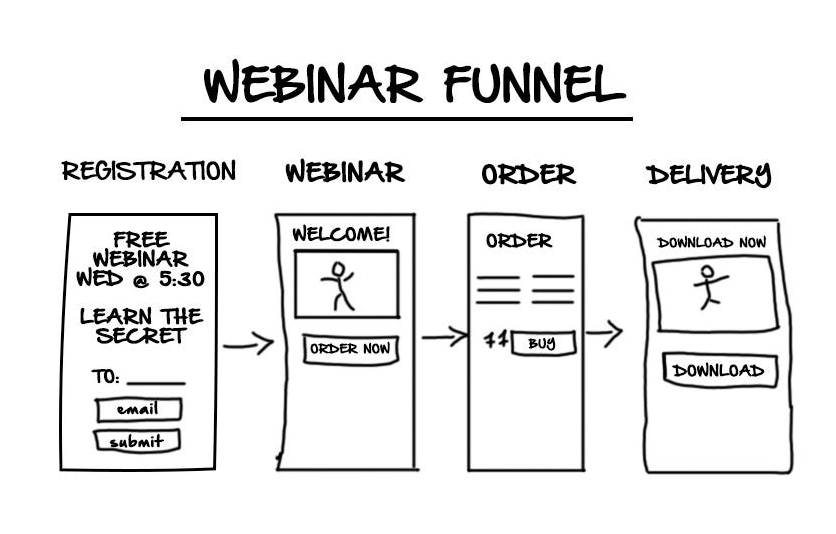
(Image Source: Medium)
For example, if a company offers a free webinar on “Healthy Cooking,” their webinar funnel may include social media ads, getting people to sign up, and then sending follow-up emails to offer a related cooking course for sale.
What Are the Stages of a Webinar Funnel?
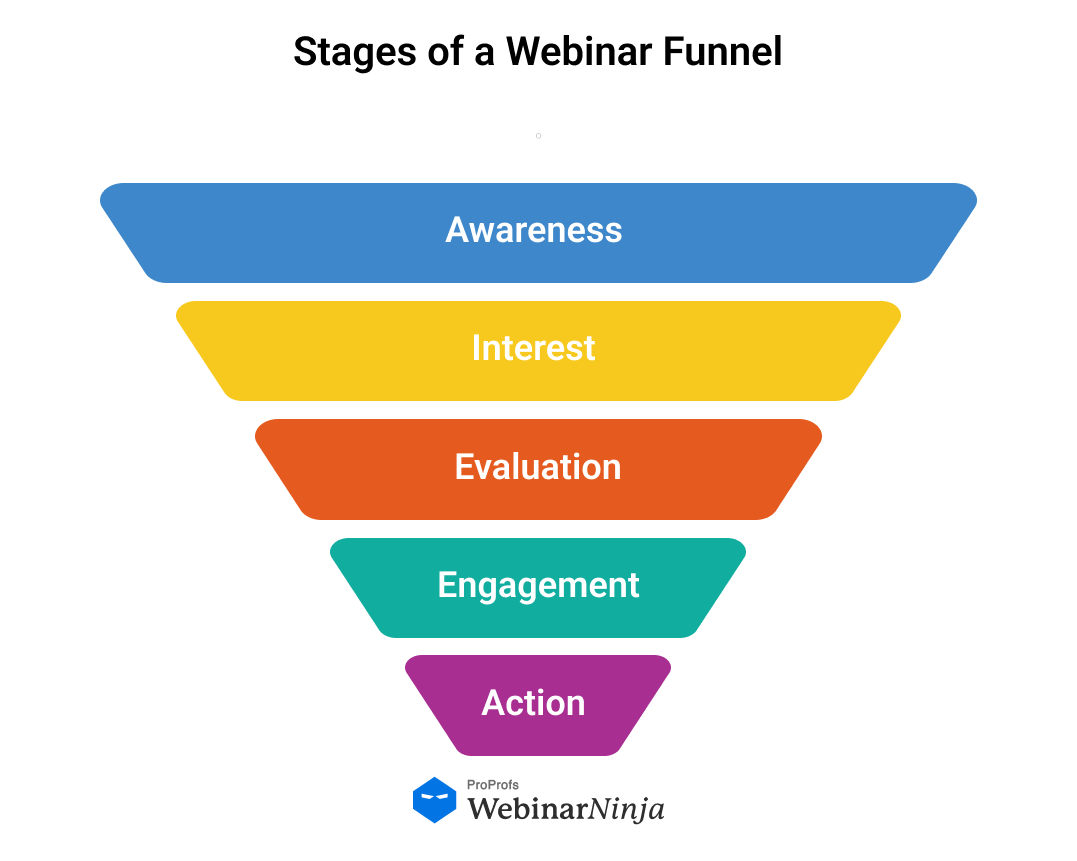
A webinar funnel helps guide potential attendees from awareness to post-event engagement, ultimately driving conversions.
Here’s a breakdown of each stage with real-life webinar funnel examples:
1. Awareness Stage
This is the first point of contact where potential attendees learn about your upcoming webinar. People are not yet familiar with your webinar at this stage, so the focus is on spreading the word and grabbing attention.
Goal: Introduce the webinar to as many relevant people as possible, making them aware of the event.
Example: Suppose you’re planning a webinar on “Boosting Employee Engagement.” You start by running Facebook and LinkedIn ads, publishing blog articles related to employee engagement, and posting on relevant forums or communities. Your content might focus on common challenges businesses face, with a subtle invitation to attend your webinar for solutions.
A catchy headline like “Struggling with Low Employee Engagement? Join Our Free Webinar to Learn Expert Strategies!” can help attract attention.
2. Interest Stage
In this stage, your audience has discovered your webinar, and now the objective is to deepen their interest. This is where you expand on the benefits of attending your webinar and how it directly relates to their needs or problems.
Goal: Build curiosity and engage the audience by explaining why your webinar is relevant and what value it offers.
Example: For your employee engagement webinar, the ad or blog post directs interested individuals to a dedicated landing page. They can read more about the webinar topics—key tips, success stories, and the speaker’s credentials.
You could offer additional details like, “Discover proven techniques used by top companies to increase team engagement by 40%.” You might also include a downloadable resource, such as a “Top 10 Employee Engagement Tips” guide, encouraging them to sign up and keep exploring your content.
3. Decision Stage
At this point, your potential attendees are seriously considering attending the webinar. They know what it’s about, but they need that extra push to register. Your job is to eliminate doubts and present a clear value proposition that convinces them to act.
Goal: Provide enough information and incentives to turn interest into a commitment.
Example: Following the landing page visit, you send a reminder email emphasizing what attendees will gain from the webinar. This email might include testimonials from previous participants who benefited from similar events or a special offer for those who register early.
For instance, “Register now and get exclusive access to our free post-webinar Q&A session.” These extra benefits serve as triggers to convert undecided individuals into confirmed attendees.
4. Action Stage
In the action stage, the main focus is on ensuring a smooth and positive experience for people who have registered for the webinar. By now, they’ve committed to attending, and it’s crucial to keep them engaged up to the point of showing up for the live session.
Goal: Facilitate an easy registration process, provide useful reminders, and create a positive event experience.
Example: Once someone registers for your employee engagement webinar, you send them confirmation emails with clear instructions, a calendar invite, and reminders as the event approaches. During the webinar, you actively engage the audience with interactive features like polls, live Q&A, and downloadable resources.
For instance, “Use the chat feature to ask our expert about your specific employee engagement challenges.” Ensuring a smooth process and active engagement increases the likelihood that attendees will stay tuned throughout the event.
5. Post-Webinar Stage
Once the webinar is over, your goal shifts to nurturing the relationship with attendees. Whether they attended live or missed the session, this stage is where you can maximize the webinar’s value by converting attendees into leads, customers, or advocates.
Goal: Keep the momentum going by providing follow-up actions and offers to further engage your attendees.
Example: After the webinar, send a thank-you email with a link to the recorded session, along with a follow-up survey to gather feedback. You could include a special offer, such as a free consultation on improving employee engagement or a discounted trial for a related service.
For instance, “Thank you for attending! As a special thank you, we’re offering a 15-minute free consultation to discuss personalized strategies for your team.” This stage helps you turn attendees into potential customers or keep them engaged for future events.
How to Create a Webinar Funnel
Building an effective webinar funnel involves a strategic approach to attract, engage, and convert attendees. Here’s a step-by-step guide to creating a successful webinar funnel:
1. Create Awareness Through Targeted Promotions
The first step in starting your webinar funnel is to create awareness by driving traffic to your landing page.
A well-designed landing page is key to grabbing attention, so ensure it’s visually appealing and clearly communicates the webinar’s value. Promote this page using a combination of social media, email campaigns, and paid ads.
Highlight the benefits and key takeaways to make your offer irresistible. You’ll entice more sign-ups by showing the audience exactly what they’ll gain from attending.
2. Capture Leads With Compelling Registration
The next step is to capture leads through a simple yet engaging registration process. Create a registration form that’s easy to complete but also captures essential details.
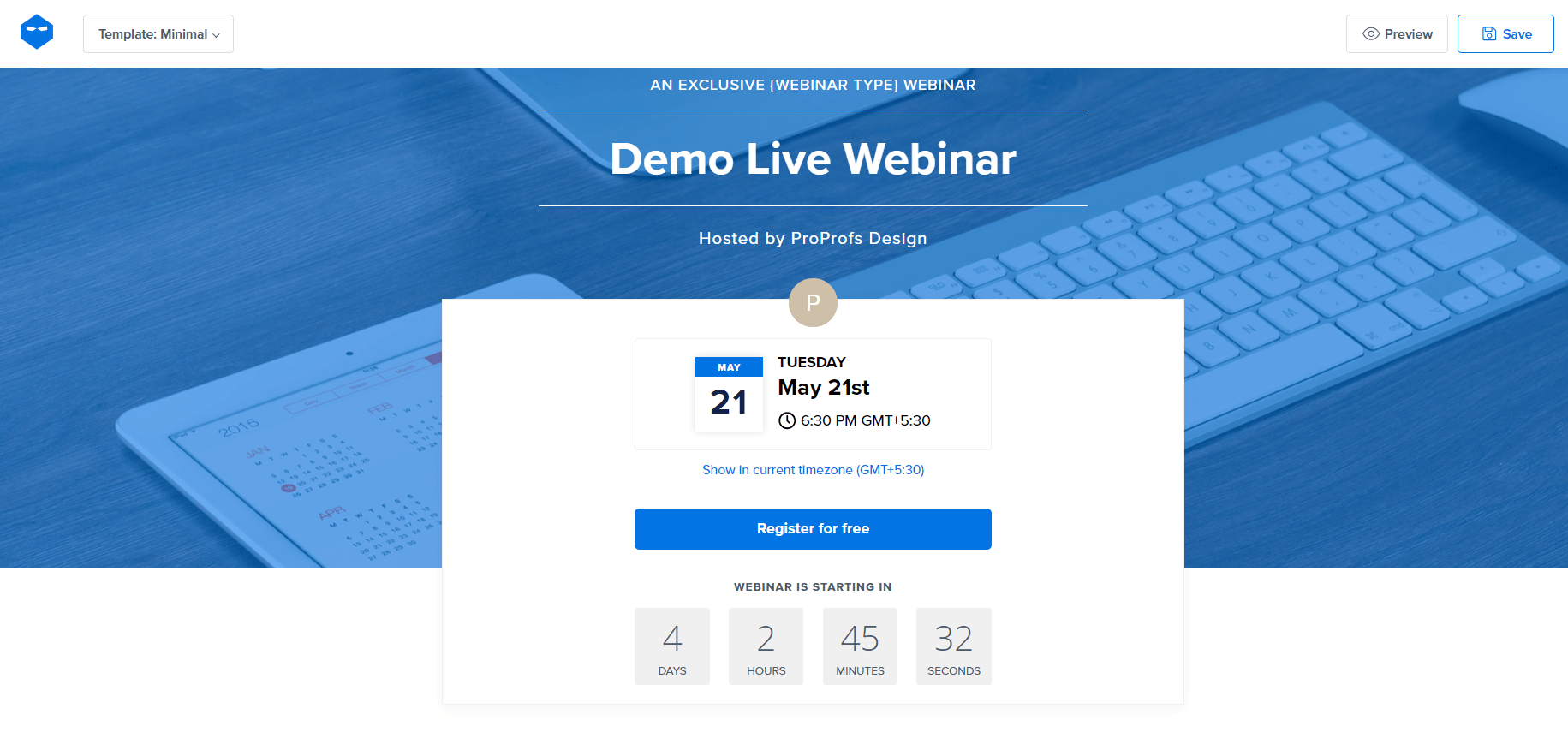
Optimizing your form is crucial—keep the copy persuasive and ensure your call-to-action stands out.
Besides, offering early bird discounts or exclusive content can further incentivize people to sign up, making your registration process more effective.
3. Nurture With Pre-Webinar Engagement
Once you have registrants, nurture them in the lead-up to your event. Automate reminder emails to keep your audience excited and committed to attending.
Send out teasers like sneak peeks or free resources that increase their anticipation.
Also, engaging attendees before the webinar with polls or pre-event surveys can spark early involvement, giving them a sense of connection even before the event begins.
4. Deliver a High-Value Webinar
On the day of the webinar, your goal is to deliver high-value content that solves your audience’s problems. Focus on practical, actionable insights that provide real value to attendees.
Use interactive features such as live Q&A sessions, polls, and chats to engage your audience throughout the session.
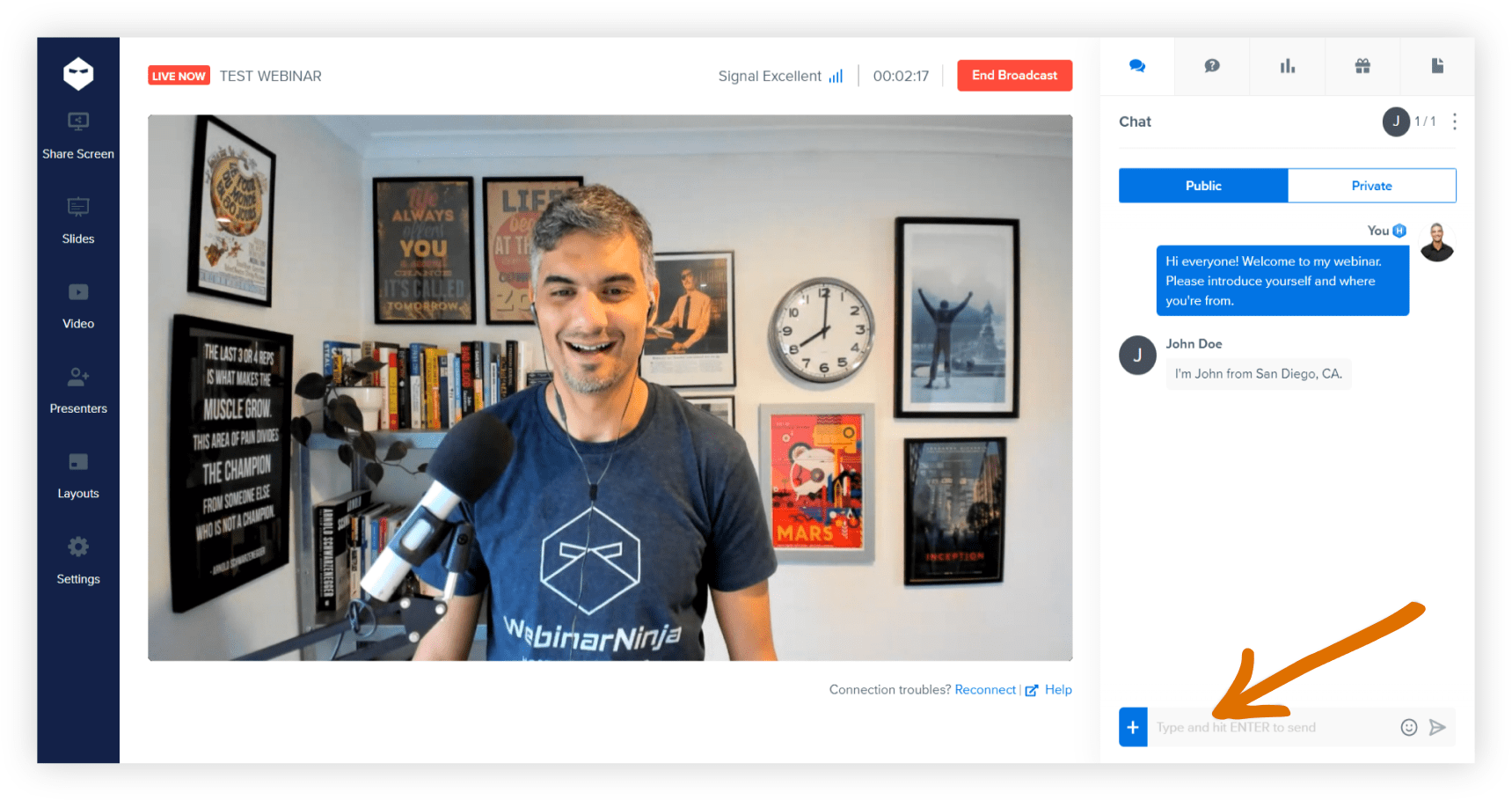
Toward the end of the webinar, include a compelling offer that attendees can act on immediately—whether it’s a product, service, or further engagement opportunity.
5. Follow Up and Convert Leads
Immediately after the webinar, send out follow-up emails to keep the momentum going. Share the webinar replay link for those who couldn’t attend or those who want to revisit key points.
Continue nurturing these leads by offering additional resources and addressing any objections that arise.
To encourage conversions, reinforce your main offer with a limited-time discount or bonus, creating a sense of urgency.
6. Analyze and Refine the Funnel
The final step is to analyze the performance of your webinar funnel because an initial webinar funnel template might not be the final one.
Review key metrics such as attendance rates, engagement levels, and the conversion rate of leads to customers. Use attendee feedback to understand what worked and where improvements can be made.
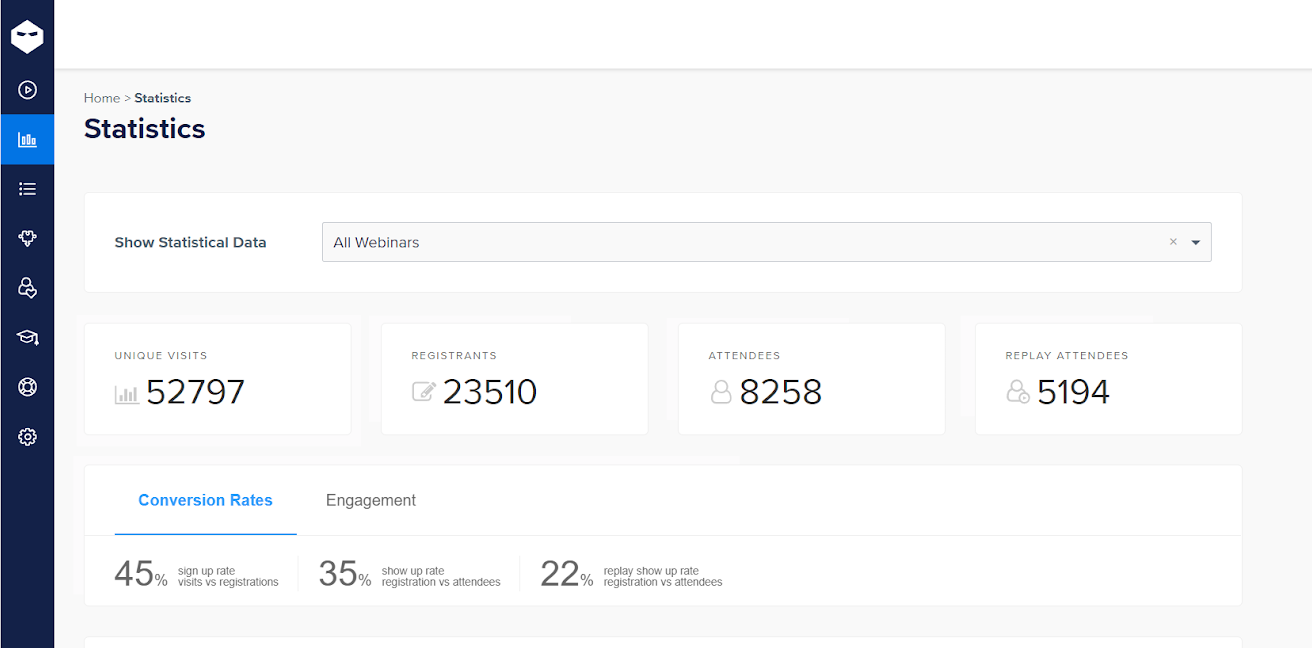
With these insights, you can adjust your approach and continually optimize your webinar funnel for future success, improving both your lead nurturing and conversion strategies.
Best Practices for a High-Converting Webinar Funnel
In order to create a high-converting webinar funnel, you need more than just the basics.
Here are some expert tips and tricks to help you boost results and turn more attendees into customers.
1. Hyper-Personalize Your Sign-Up Page
Tailor your landing page based on user behavior or referral source. Align your messaging with where the visitor came from, making it feel directly relevant and increasing registrations.
2. Offer Exclusive “Backstage” Content
Build anticipation with behind-the-scenes previews or exclusive speaker interviews. Offering early access to content keeps attendees excited and more invested.
3. Use Micro-Commitments for Registration
Start with small asks, like just an email, then follow up with more details. This gradual engagement lowers barriers and boosts sign-ups.
4. Create FOMO with Limited Engagement Slots
Offer exclusive “VIP” spots for special access, using countdown timers to drive urgency. People won’t want to miss out on a unique experience.
5. Implement Multi-Channel Nurturing
Use more than email—add SMS, social media, and chatbot reminders. This keeps your audience engaged and reduces no-shows.
6. Turn Your Webinar into an Interactive Event
Engage participants with polls, challenges, and real-time interaction. Co-creating content keeps the audience involved and boosts conversions.
7. Use “Pay-What-You-Want” Pricing
Offer a flexible pricing model after the webinar. This builds trust and can lead to surprisingly high returns with less sales pressure.
8. Leverage Live Social Proof
Show real-time testimonials or success stories during the webinar. It adds credibility and creates momentum, encouraging attendees to act.
9. Segment Post-Webinar Follow-Ups
After the event, segment attendees based on their engagement and interests. Send tailored offers for higher relevance and better conversion rates.
How to Measure the Success of Your Webinar Funnel
Here are some key aspects to measure the success of your webinar:
1. Set Clear Goals for Maximum Impact
- Identify Key Objectives: Establish what you want to achieve with your webinars, such as lead generation, sales conversions, or brand awareness.
- Set SMART Goals: Ensure your goals are Specific, Measurable, Achievable, Relevant, and Time-bound for clear direction.
2. Optimize Your Registration Process for Higher Sign-Ups
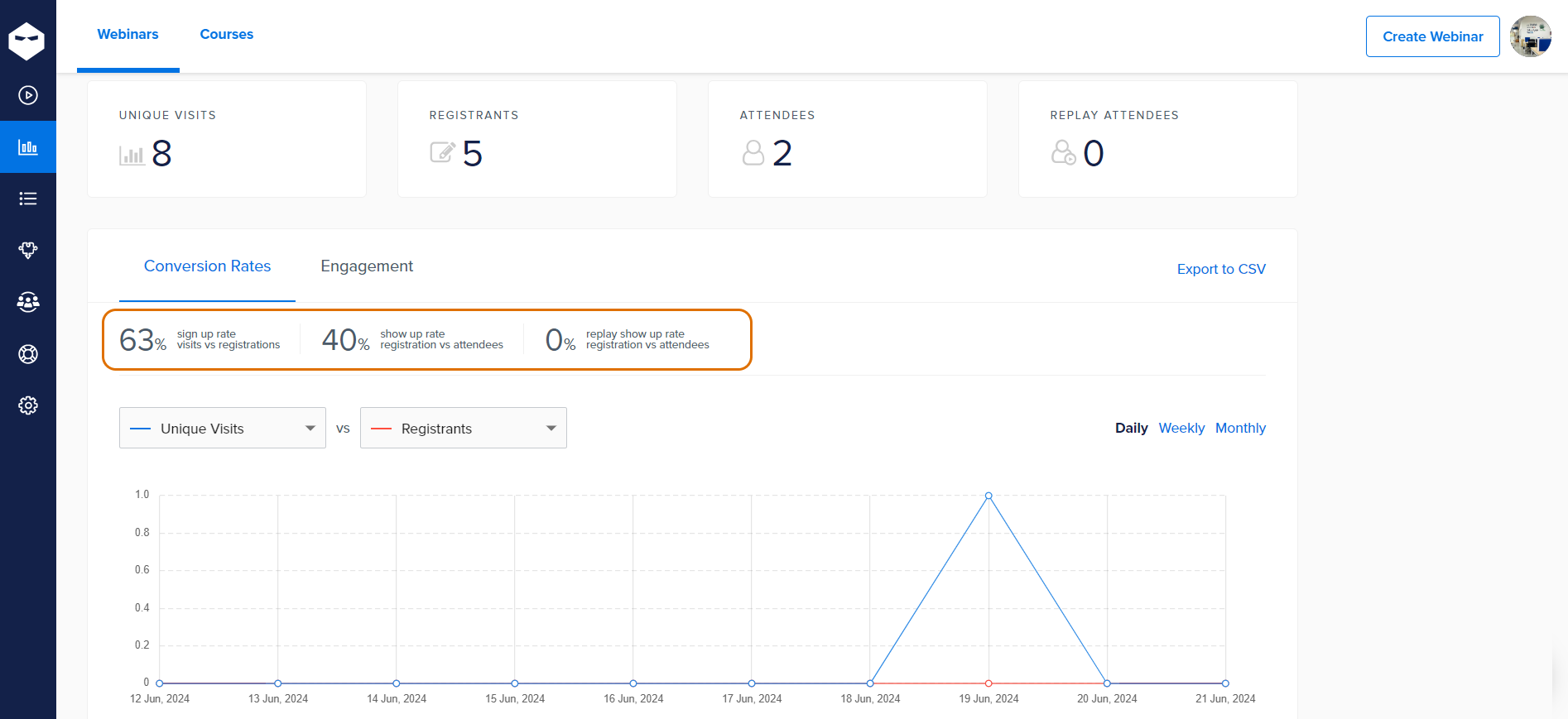
- Total Registrations: Monitor how many people signed up for your webinar to gauge interest.
- Registration Rate: To improve conversion, calculate the percentage of visitors who registered compared to the total number of viewers on your registration page.
- Source of Registrations: Analyze where your registrants are coming from (e.g., social media, email marketing, website) to identify and leverage effective channels.
3. Boost Attendance Rates for Greater Engagement
- Live Attendance Rate: Measure how many registrants attended the live session versus those who registered to understand your audience’s commitment.
- Engagement During Webinar: Use tools to assess engagement levels, such as poll participation, chat activity, and questions asked to enhance interactivity.
4. Leverage Post-Webinar Insights for Continuous Improvement
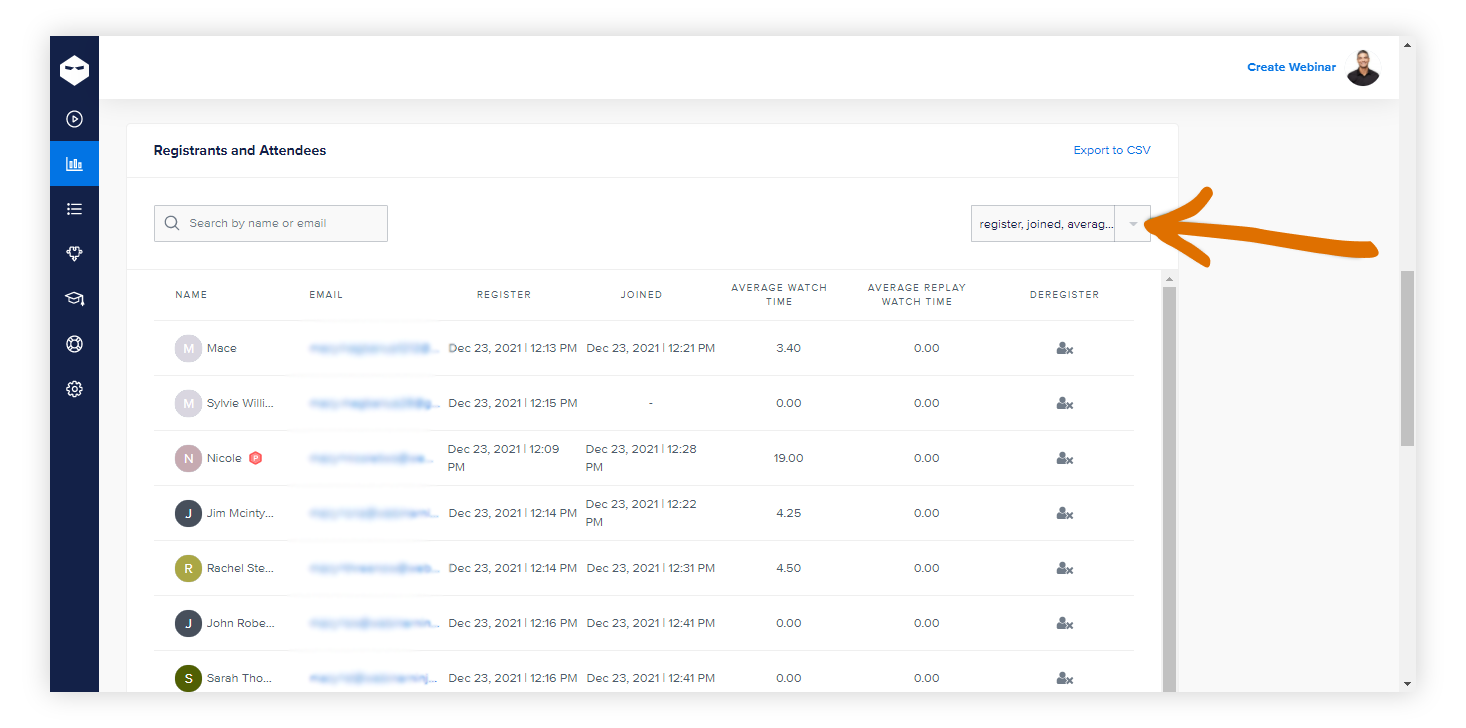
- Follow-Up Engagement: Track how many attendees engaged with follow-up emails, resources, or offers sent after the webinar to maintain momentum.
- Lead Conversion Rate: Measure the percentage of attendees who took the desired action (e.g., signing up for a free trial or making a purchase) after the webinar to assess effectiveness
5. Gather Valuable Feedback to Enhance Future Webinars
- Surveys and Polls: Send post-webinar surveys to attendees to gather feedback on their experience, content relevance, and areas for improvement.
- Net Promoter Score (NPS): Assess the likelihood of attendees recommending your webinars to others, providing insight into overall satisfaction.
6. Track Revenue Metrics to Measure Financial Success
- Sales Conversion Rate: Calculate the percentage of leads converted into paying customers after the webinar to understand revenue generation.
- Average Revenue per Attendee: Analyze the revenue generated by each attendee, providing insights into the webinar’s financial impact.
7. Enhance Retention Rates for Long-Term Engagement
- Repeat Attendance: Track how many attendees return for future webinars, indicating their sustained interest and engagement.
- Customer Lifetime Value (CLV): Measure the long-term value of customers acquired through webinars to evaluate the effectiveness of your marketing efforts.
8. Utilize Analytics Tools for In-Depth Insights
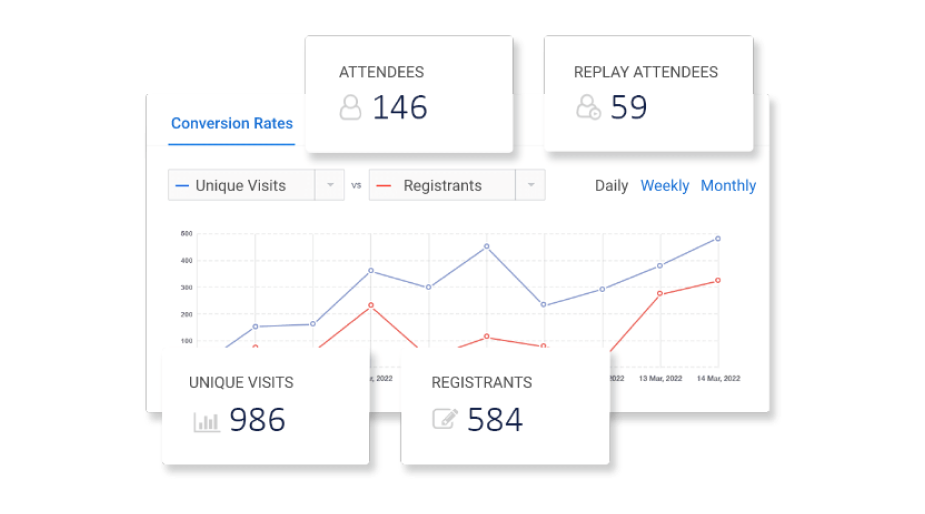
- Webinar Platforms: Use built-in analytics from your webinar software to gather data on registrations, attendance, engagement, and conversions for informed decision-making.
- CRM Integration: Integrate your webinar platform with your CRM to track lead behavior and sales activities linked to webinar participation, ensuring a comprehensive overview.
What Are the Types of Webinar Funnels?
Webinar funnels can be categorized into various types, each designed to meet different marketing and sales objectives. Here’s an overview of the main types of webinar funnels:
1. Lead Generation Funnels
Use lead-generation funnels to nurture customer relationships easily. These funnels offer valuable content, allowing businesses to grow their email lists and build relationships over time.
How It Works: Visitors sign up for a free webinar and provide their contact information in exchange for access to the webinar. Follow-up emails nurture these leads.
2. Sales Funnels
The webinar sales funnel focuses on converting attendees into paying customers by highlighting a product’s benefits and unique features, thus driving immediate sales and revenue.
How It Works: The webinar showcases the product, addresses pain points, and presents the solution, culminating in a call to action (CTA) encouraging immediate purchase.
3. High-Ticket Sales Funnels
Designed for premium products or services, this funnel emphasizes trust-building and in-depth demonstrations to justify higher price points, ultimately encouraging attendees to make significant investments.
How It Works: The webinar provides extensive information, including case studies and testimonials, to build trust and justify the higher price point. Often includes a limited-time offer.
4. Automated Webinar Funnels
The automated webinar funnels maximize efficiency by reaching larger audiences through pre-recorded content, allowing businesses to deliver consistent messages without the need for constant live interaction. This is sometimes referred to as an evergreen webinar funnel.
How It Works: Pre-recorded webinars are set to play at scheduled times. This allows for a wider audience reach without the need for live hosting.
5. Follow-Up Funnels
Designed to re-engage previous attendees, this funnel nurtures relationships by providing additional resources and offers, keeping prospects interested, and guiding them toward conversion.
How It Works: After the webinar, attendees receive follow-up emails with additional resources, offers, or invitations to another webinar, keeping them engaged and moving them closer to conversion.
6. Product Launch Funnels
The product launch webinar funnel creates excitement around new products or services, effectively leveraging live demonstrations and promotions to engage the audience and drive early sales.
How It Works: The webinar serves as a launch event, building excitement and anticipation. It often includes live demos and special promotions.
7. Survey or Feedback Funnels
Gathering insights from potential customers is crucial for refining products. This funnel allows businesses to solicit feedback and gauge interest in new ideas or concepts.
How It Works: The webinar includes a survey or Q&A session to gather feedback on a product idea or service, helping refine future offerings based on audience input.
8. Webinar Replay Funnels
These funnels leverage interest from previous live webinars by offering recorded sessions, enabling those who missed the live event to engage with the content at their convenience.
How It Works: Offers a replay of a past successful webinar, allowing those who missed it to engage and convert at their convenience.
9. Training or Educational Funnels
Providing in-depth training positions the host as an industry expert, delivering valuable content that nurtures leads and encourages further engagement with the brand.
How It Works: Focuses on delivering value through educational content, positioning the host as an expert, and nurturing leads toward further engagement or purchasing decisions.
10. Networking or Community-Building Funnels
These funnels focus on fostering community around a niche interest, allowing participants to connect and interact while subtly promoting related products and services.
How It Works: The webinar encourages participant interaction, fostering a sense of community while subtly promoting related products or services.
Unlock Better Growth Through an Optimized Webinar Funnel
Let’s take a quick recap.
Optimizing your webinar funnel is essential for achieving better growth. Refining each stage—from planning and promotion to delivery and follow-up—can enhance engagement and drive conversions.
Remember, a well-structured funnel increases attendance and fosters lasting relationships with your audience.
Besides, you can get great results using a robust webinar platform like WebinarNinja. It offers powerful features such as customizable registration pages, reporting & analytics tools, and automated follow-ups to streamline your process and elevate your webinar experience.
And that’s all the recipe you need for a successful webinar funnel!
Want to host a webinar for free?
Use WebinarNinja to teach, improve marketing, and grow your sales.


